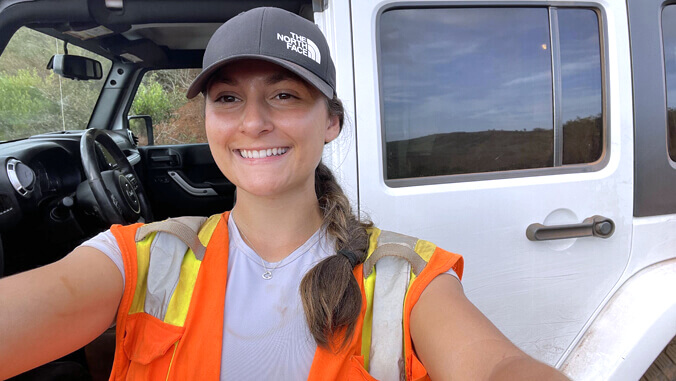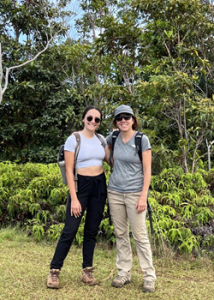
A student’s love of math is enabling her to support Hawaiʻi’s renewable energy goal (100% clean energy by 2045) through research projects at the University of Hawaiʻi at Mānoa School of Ocean and Earth Science and Technology (SOEST).
Mattox Telwar is working with the Hawaiʻi Groundwater and Geothermal Resources Center (HGGRC), led by Nicole Lautze, in SOEST to better understand the potential for geothermal energy across the state.

“I chose to pursue a minor in mathematics simply because I love it, and I believe that a strong mathematical background would help me in my research efforts,” said Telwar.
Geothermal energy production
HGGRC explores the geologic structures in Hawaiian volcanoes and how those structures influence groundwater storage and flow. On Lānaʻi, HGGRC is exploring Palawai Basin’s groundwater system, an important factor for geothermal energy production.
“Because of Hawaiʻi’s active volcanoes and the presence of subsurface heat, the use of geothermal energy can prove to be a viable option to solve some of the state’s energy woes,” said Lautze.
After the field project, Telwar asked to assist with data processing and translating the group’s data into results. To continue Telwar’s work with the researchers, Lautze offered her a position as an undergraduate research assistant in HGGRC.
“I have had the opportunity to participate in many fieldwork projects, including surveys to map groundwater flow, collecting gravity measurements, working in 3D modeling, and participating in presentations about our work,” said Telwar.
Born and raised in Nashville, Tennessee, Telwar moved to Hawaiʻi and joined SOEST after graduating high school. She found a passion for research and Earth sciences during her first semester and is now pursuing a bachelor’s of science degree in Earth Sciences with a concentration in geophysics and tectonics and a minor in mathematics.
Telwar is on track to graduate in spring 2025, and intends to pursue a doctorate degree in geophysics or planetary science in hopes of creating a research career focused on sustainability and discovery efforts.

